Frogs and Toads in Ancient Mythology: Symbolic Creatures Across Cultures
Frogs and toads have hopped their way into the myths and legends of many ancient cultures. These small amphibians played big roles in stories from around the world.
From Egypt to China, Greece to indigenous Americas, frogs and toads captured people’s imaginations.
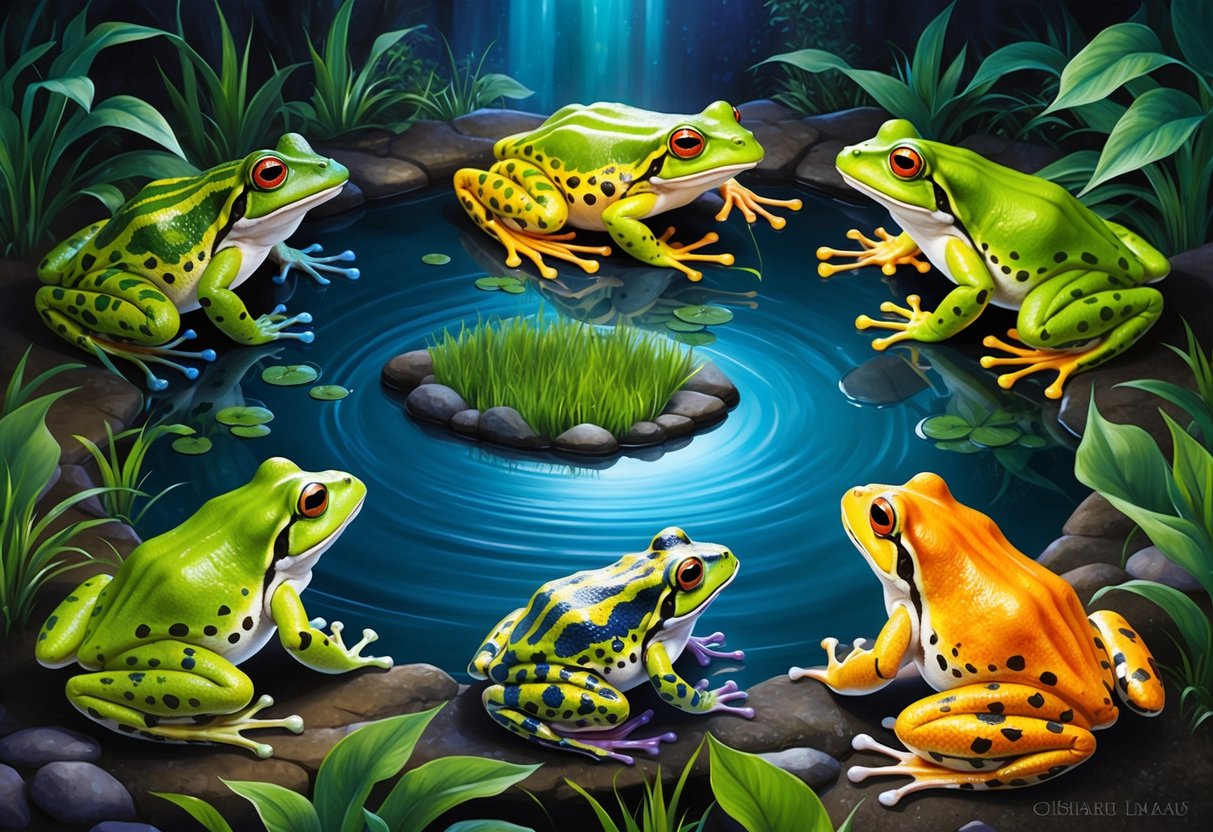
Frogs and toads often symbolized fertility, transformation, and the cycle of life in ancient mythologies. In Egypt, frog-headed gods helped create the world. Chinese myths saw toads as wise creatures living on the moon. Greek tales featured frogs in stories about the gods.
These slimy critters showed up in old folktales too. Some cultures saw them as good luck charms. Others thought they were witches in disguise. No matter what, frogs and toads left their mark on human beliefs for thousands of years.
Key Takeaways
- Frogs and toads appear in myths from many ancient cultures
- They often represented themes like creation and change
- Their roles in stories ranged from helpful gods to tricky creatures
Significance of Amphibians in Mythology
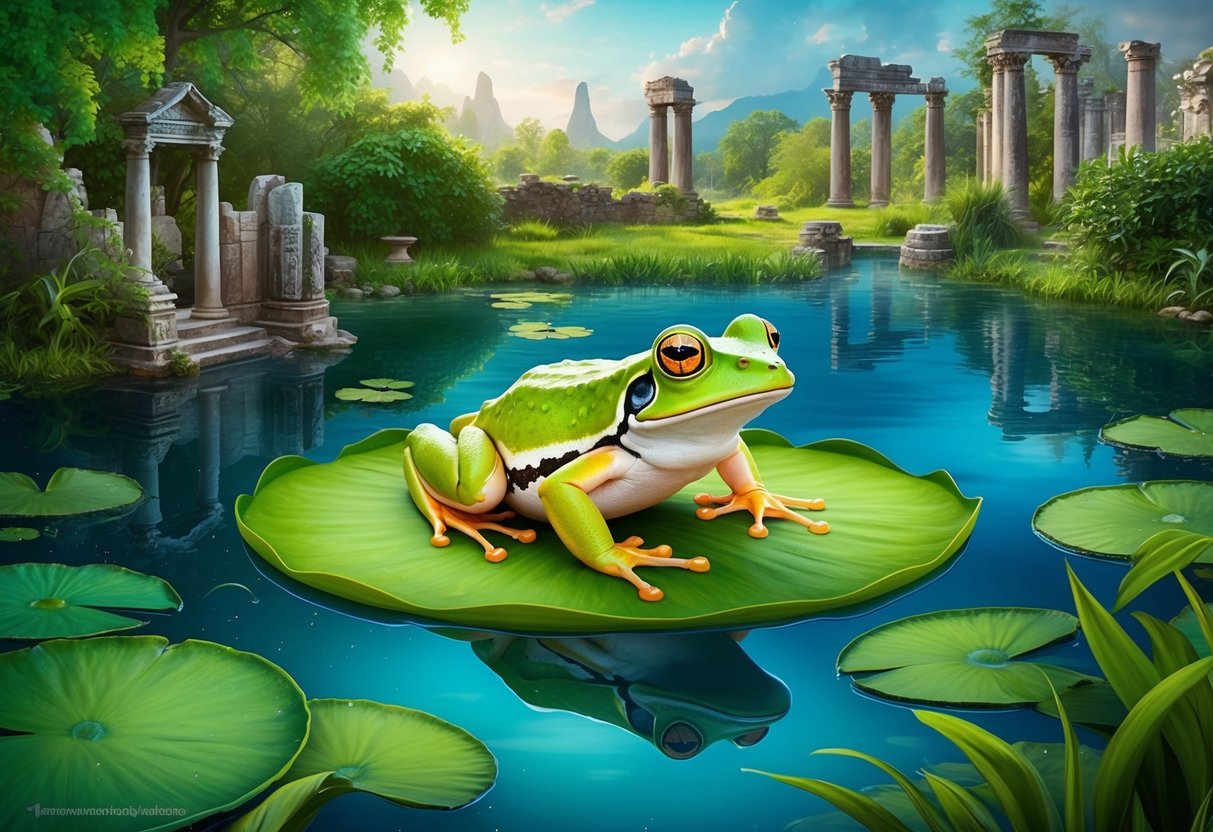
Frogs and toads play important roles in myths and legends around the world. These small creatures often symbolize big ideas.
In ancient Egypt, the frog-goddess Heqet represented fertility. People saw frogs as symbols of new life because millions appeared after the Nile flooded each year.
Norse myths tell of Thor facing a giant venomous toad. This story shows amphibians as dangerous foes that even gods must overcome.
Chinese folklore takes a different view. Toads are seen as lucky creatures that bring wealth. The legendary figure Liu Hai is often shown with a three-legged toad, a symbol of good fortune.
Hindu mythology links frogs to the cycle of life and rebirth. The god Vishnu even takes the form of a golden frog in some stories.
In many cultures, amphibians represent:
- Transformation
- Magic
- Rebirth
- Fertility
- Fortune
Witchcraft traditions sometimes use toads in spells or potions. This connects these animals to mysterious powers and dark magic in some people’s minds.
These varied beliefs show how amphibians capture human imagination. Their ability to live both in water and on land makes them seem magical and full of hidden meaning.
Frogs in Egyptian Mythology
Frogs held great significance in ancient Egyptian beliefs. They were linked to important deities and symbolized key concepts like fertility and rebirth.
Heqet: Goddess of Fertility and Birth
Heqet was an Egyptian goddess associated with fertility and childbirth. She was often shown as a frog or a woman with a frog’s head. Frogs were connected to the Nile’s annual flooding, which brought new life to the land.
Pregnant women wore amulets with Heqet’s image for protection during childbirth. The goddess was believed to help with the final stages of labor.
Heqet was sometimes paired with Khnum, the ram-headed god of creation. Together, they represented the creative forces of nature that brought new life into the world.
Frogs as Symbols of Life and Resurrection
In ancient Egypt, frogs symbolized life, resurrection, and fertility. Their link to water and their sudden appearance after the Nile’s floods made them powerful symbols of rebirth.
The god Hapi, who represented the Nile’s annual flooding, was sometimes depicted with frog imagery. This connection further cemented the frog’s association with life-giving waters.
Kek, a lesser-known Egyptian deity, was occasionally shown with a frog’s head. He represented primordial darkness and chaos, adding another layer to the frog’s symbolic meaning in Egyptian mythology.
Toads in Chinese Culture
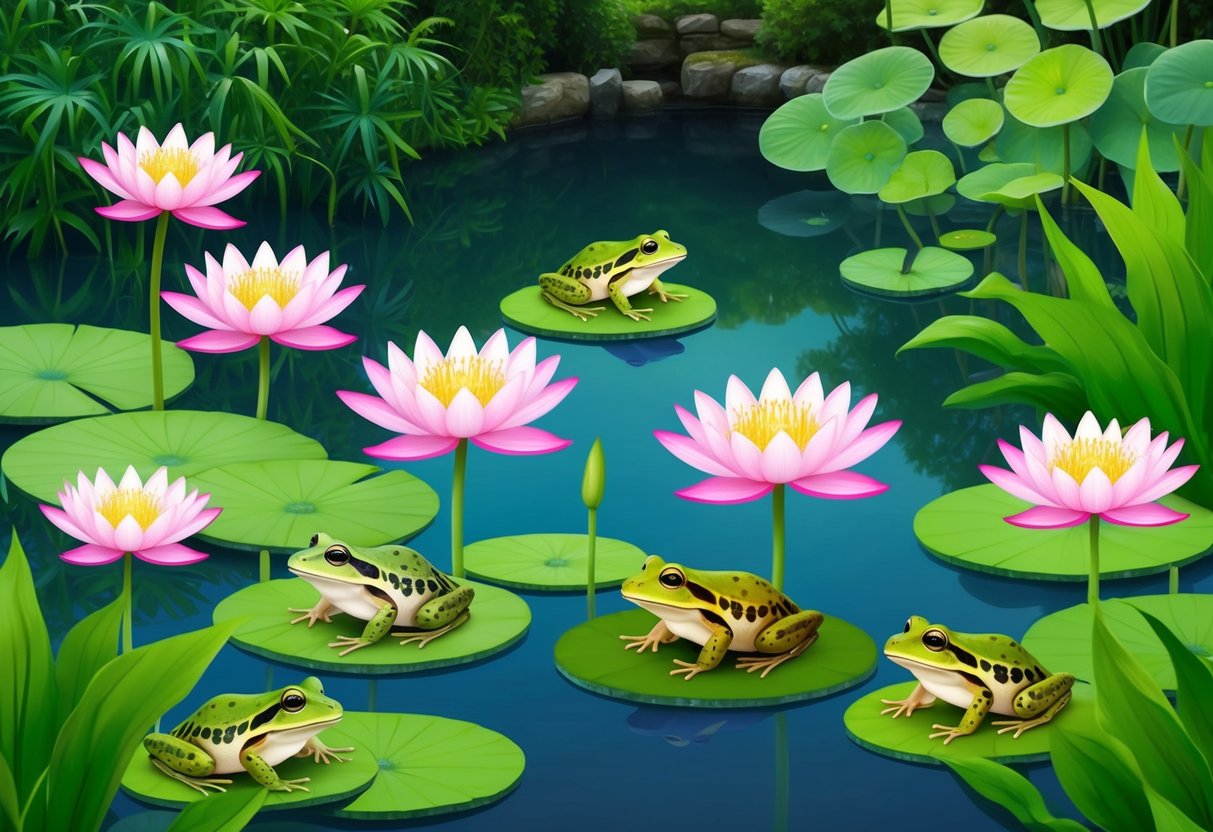
Toads hold special significance in Chinese culture. They are seen as symbols of good fortune and longevity.
Jin Chan: The Money Toad
Jin Chan, also known as the three-legged money frog, is a popular figure in Chinese folklore. This mythical creature is believed to attract wealth and protect its owner’s fortune.
Jin Chan is often depicted sitting on a pile of coins with a coin in its mouth. Many Chinese households and businesses display statues of Jin Chan to invite prosperity.
In feng shui, the placement of Jin Chan is important. It is usually positioned near the entrance of a home or office, facing inward to draw wealth inside.
The legend of Jin Chan is tied to Liu Hai, a historical figure later worshipped as a god of wealth. This connection strengthens the toad’s association with financial success.
Toads as Symbols of Immortality
In Chinese mythology, toads are also linked to immortality. This belief stems from the legend of Chang’e, the moon goddess.
Chang’e is said to have transformed into a toad after consuming an elixir of immortality. As a result, toads became associated with longevity and eternal life.
Ancient Chinese alchemists sought to extract elixirs from toads, believing they held the secret to immortality. This practice further cemented the toad’s status as a symbol of long life.
In Chinese art, toads are often depicted with other symbols of longevity, such as pine trees or peaches. This reinforces their cultural significance as harbingers of a long and prosperous life.
Greek and Roman Mythologies
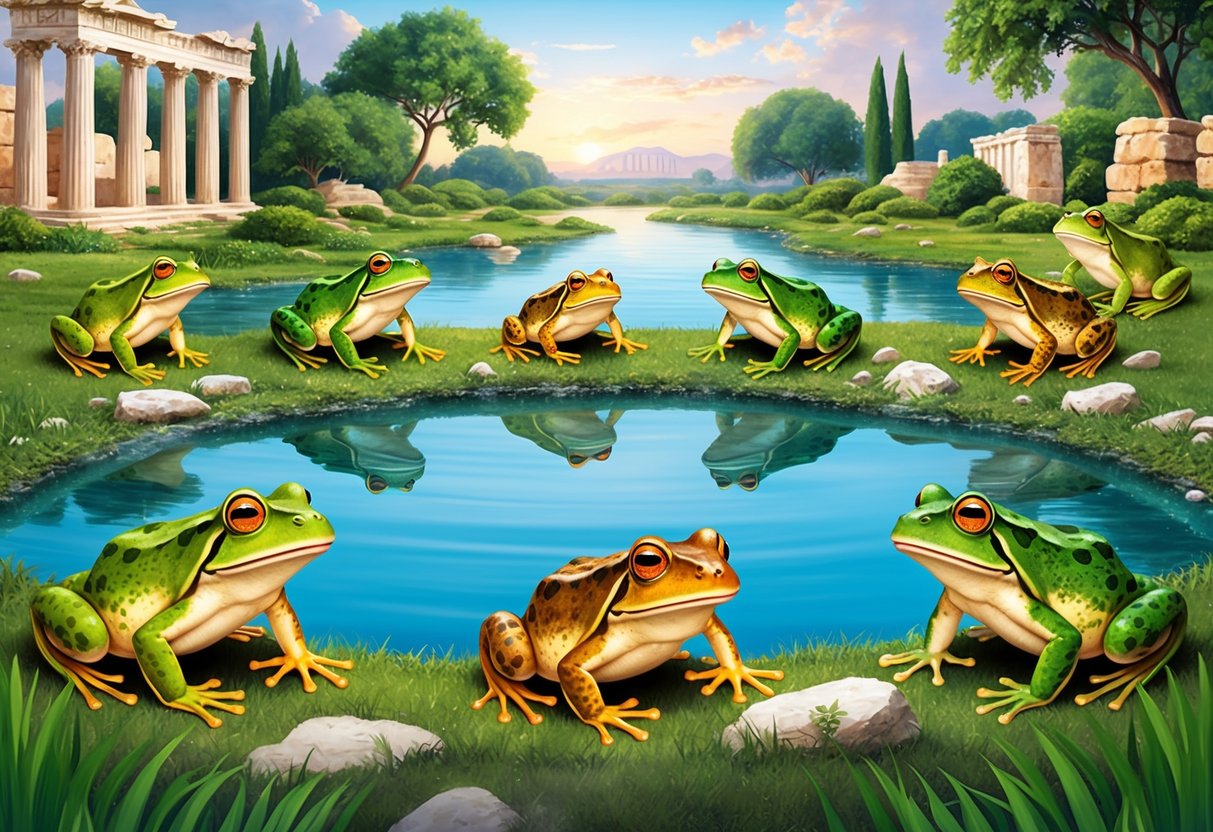
Frogs played interesting roles in Greek and Roman myths. They appeared in famous literary works and were linked to gods and natural events.
Aristophanes’ ‘The Frogs’
Aristophanes wrote a play called ‘The Frogs’ in 405 BC. It’s a comedy that uses frogs as characters. The frogs sing a chorus that goes “Brekekekex koax koax” throughout the play.
In the story, the god Dionysus goes to the underworld. He wants to bring back a great playwright to save Athens. The frogs appear when Dionysus crosses the River Styx.
The play pokes fun at Greek society and politics. It also talks about art and literature. ‘The Frogs’ is still performed today and studied in schools.
Frogs in Homeric Poems
Frogs show up in poems linked to Homer, the famous Greek poet. One such work is the ‘Batrachomyomachia’, which means “The Battle of Frogs and Mice”.
This poem is a parody of Homer’s ‘Iliad’. Instead of human heroes, it has frogs and mice fighting each other. The story starts when a mouse meets a frog by a lake.
Greek and Roman myths often linked frogs to fertility and harmony. Some tales connected them to Aphrodite, the goddess of love. Frogs were seen as symbols of new life and change in these ancient cultures.
Indigenous Mythologies
Frogs and toads hold significant roles in many indigenous cultures around the world. These amphibians are often seen as powerful symbols in creation stories, healing practices, and spiritual beliefs.
Frogs in Native American Lore
In Native American mythology, frogs play diverse roles. Some tribes view frogs as medicine animals with healing powers. They are also linked to the ability to bring rain, which is crucial for agricultural societies.
Frogs appear in many Native American creation myths. In some stories, the Great Spirit sent a frog to fetch mud from beneath the water to create the earth. This tale highlights the frog’s importance in world creation.
The Anishinabe tribes associate frogs with transformation and growth. This connection likely stems from the frog’s life cycle, which involves dramatic changes from egg to tadpole to adult.
Australian Aboriginal Legends
Australian Aboriginal mythology also features frogs in important roles. The Rainbow Serpent, a major creator being in many Aboriginal stories, is sometimes depicted with frog-like features.
In some Dreamtime stories, frogs are credited with holding all the world’s water in their bellies during a great drought. When made to laugh, they released the water, filling the rivers and lakes.
The Australian green tree frog is particularly significant in certain Aboriginal cultures. It’s associated with rain and water spirits, and its appearance is often seen as a sign of coming rainfall.
Frogs and Toads in Folklore
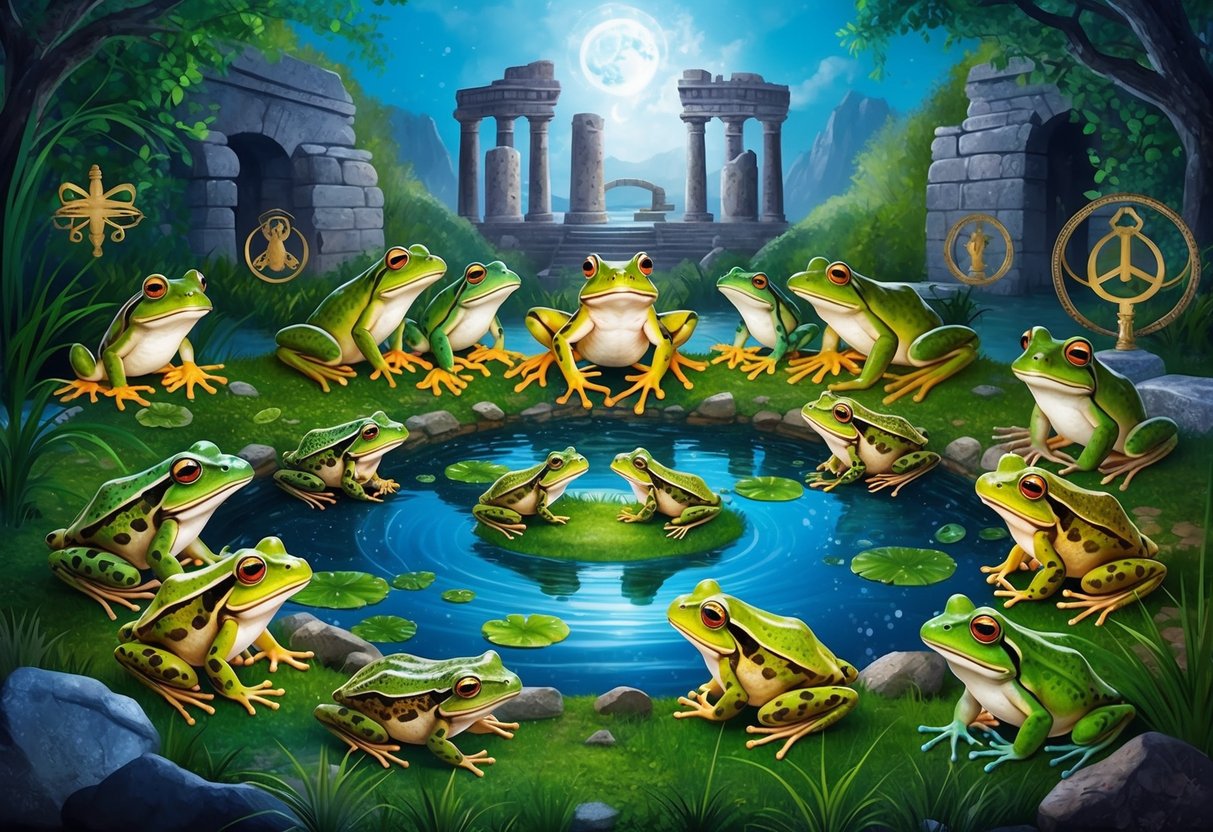
Frogs and toads play important roles in folklore across different cultures. These amphibians often symbolize transformation, fertility, and magic in traditional stories and beliefs.
European Fairy Tales
In European folklore, frogs and toads frequently appear as enchanted creatures. The most famous example is “The Frog Prince” tale. In this story, a princess kisses a frog, turning it into a handsome prince.
Frogs also feature in witchcraft lore. People believed witches used parts of frogs in their spells and potions. Some thought frogs could predict the weather. A croaking frog was said to signal coming rain.
In some regions, frogs were seen as good luck charms. People kept dried frogs or frog-shaped trinkets in their homes or pockets for protection and fortune.
Asian Folk Stories
Asian folklore gives frogs and toads significant roles too. In China, the three-legged money toad is a symbol of prosperity. People place statues of this creature in their homes or businesses to attract wealth.
Japanese mythology links frogs to success and good fortune. The word for frog in Japanese sounds like “return,” so frogs represent safe journeys. Travelers often carry frog charms for protection.
In some Southeast Asian cultures, frogs are tied to rice farming. Their croaks signal the start of the rainy season. Farmers see this as a good sign for their crops.
Cultural Depictions and Symbolism
Frogs and toads have played important roles in myths and legends across cultures. They often represent transformation, fertility, and magical powers.
Frogs as Rain Bringers
Many cultures see frogs as symbols of water and rain.
In ancient Egypt, the goddess Heqet had a frog’s head and was linked to fertility and childbirth. Frogs appeared after the Nile’s yearly flooding, connecting them to new life.
Native American tribes also connect frogs to rain and water. Some groups perform rain dances that mimic frog movements. They believe this will bring much-needed rainfall for crops.
In other parts of the world, frogs’ croaking is thought to predict rain. Farmers in some areas still listen for frog calls as a sign of coming storms.
Toads and Witchcraft
Toads have a long history in witchcraft lore. Many people believed witches used toads in spells and potions.
Some thought witches could turn into toads, while others believed they had toad familiars.
In medieval Europe, toads were often ingredients in magical brews. People thought toad parts could be used for healing or curses. This idea spread fear of both toads and witches.
Some cultures saw toads as protectors against evil magic. In parts of the Pyrenees, a toad image in the eye was thought to mark a witch. This shows how toad symbolism could be both feared and respected.
Modern Interpretations and Influences
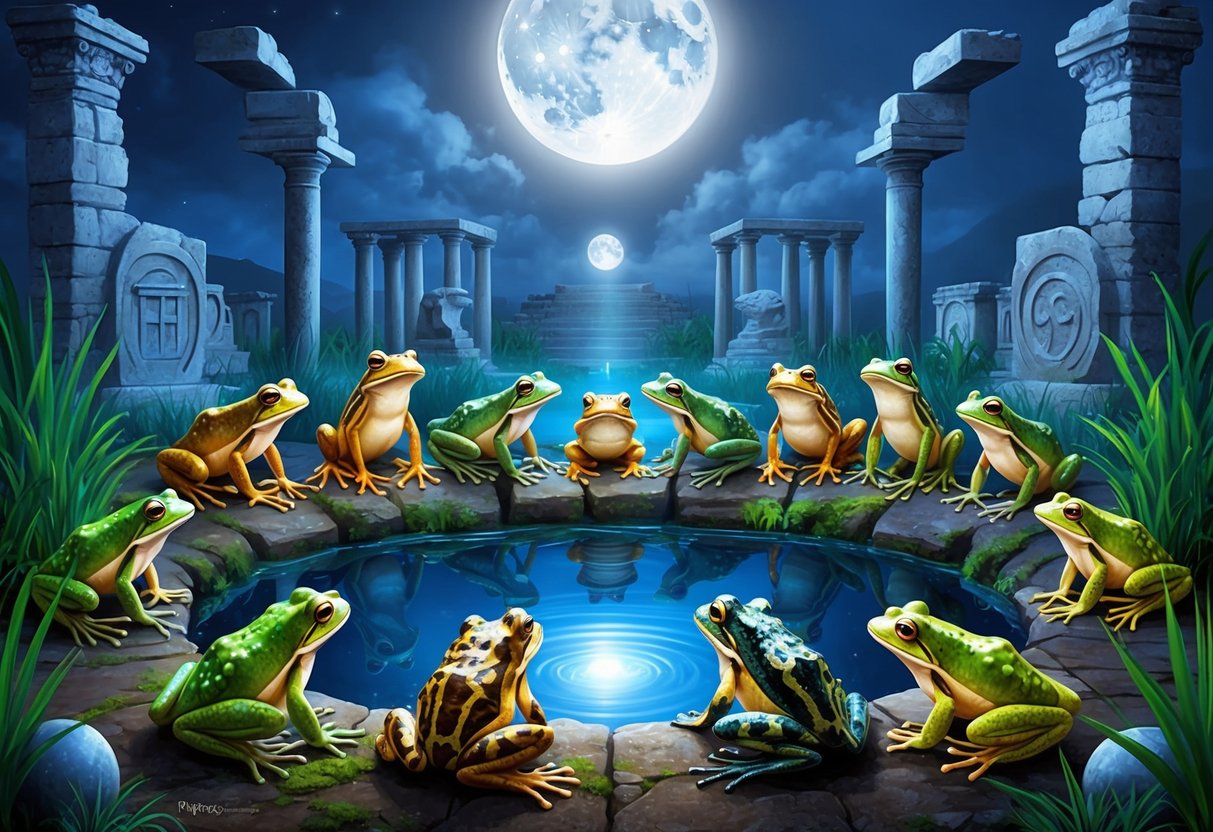
Frogs and toads continue to fascinate people today. Their symbolism has evolved in modern culture, taking on new meanings while retaining some ancient associations.
In literature and art, frogs often represent transformation and change. This connects to their life cycle from tadpole to adult.
Writers and artists use frog imagery to explore themes of growth and rebirth.
Pop culture has embraced frogs in various ways. Cartoon characters like Kermit the Frog have become beloved icons. Video games feature frog characters as nimble heroes or comic sidekicks.
Environmental concerns have given frogs new significance. They are seen as indicators of ecosystem health.
Declining frog populations signal problems in nature, making them symbols of conservation.
Some modern spiritual practices incorporate frog symbolism. They may use frog imagery in meditation or rituals focused on personal growth and adaptability.
Frog and toad motifs appear in fashion and design. Their distinctive shapes and textures inspire everything from jewelry to home decor. This shows how ancient symbols can find new life in contemporary aesthetics.
Marketing often uses frog mascots to convey friendliness or quirkiness. Beer brands, tech companies, and children’s products have all adopted frog logos or characters.
Frequently Asked Questions
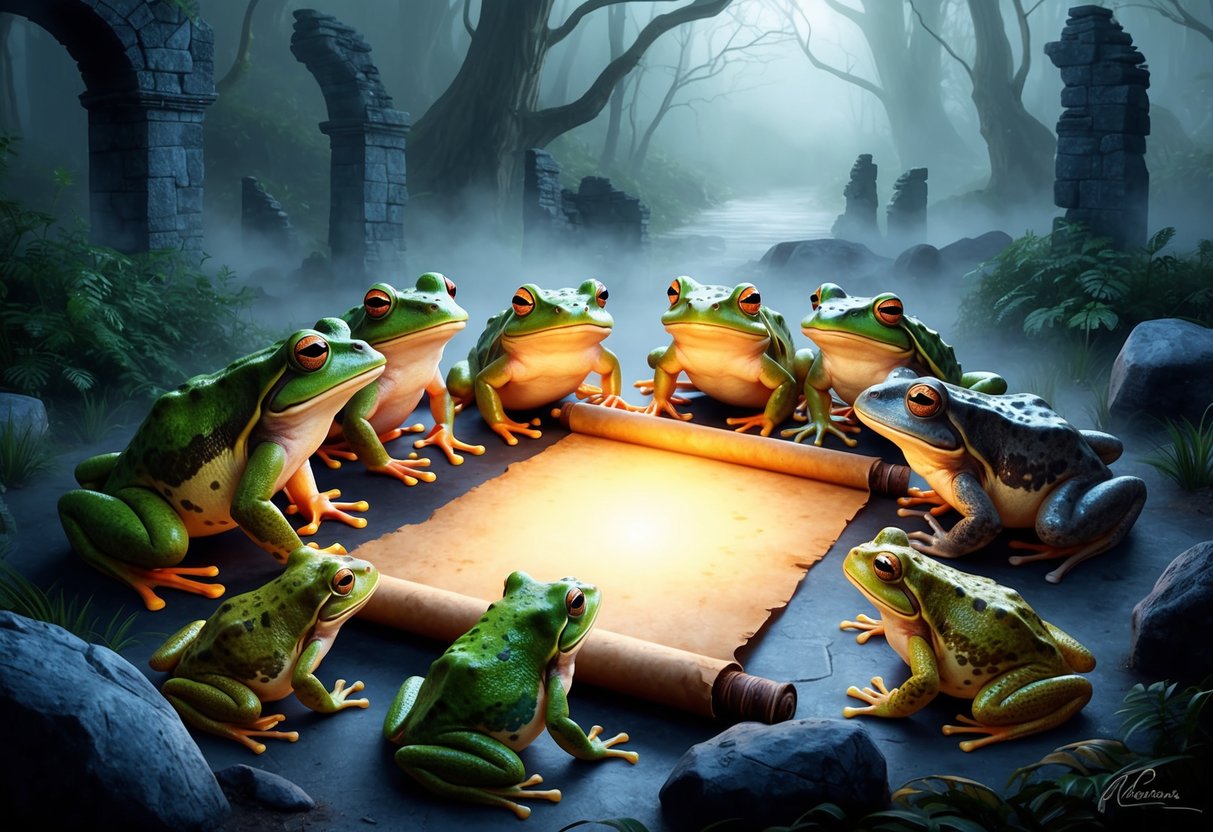
Frogs and toads hold deep significance in mythologies worldwide. They are connected to various deities, play important roles in folklore, and carry diverse symbolic meanings across cultures.
What cultural significances do frogs have in different mythologies around the world?
Frogs have varied cultural meanings globally. In ancient Egypt, they were symbols of life and fertility, tied to the Nile’s annual flooding.
Many Native American tribes saw frogs as rain bringers. In Chinese culture, frogs represent good luck and prosperity.
How were toads represented in the folklore of various ancient civilizations?
Toads often had darker associations in folklore. In European traditions, they were linked to witchcraft and magic.
Some cultures believed toads had mystical wisdom. Ancient Mayans viewed toads as sacred creatures connected to the underworld.
Which deities are associated with frogs and toads in classical mythologies?
In Egyptian mythology, Heqet, a frog-headed goddess, represented fertility. The Greek goddess Hecate was said to keep company with wise talking frogs or toads.
Some Native American myths feature frog or toad deities as creators or tricksters.
Are there any prominent mythological tales where frogs or toads play a key role?
The tale of the Frog Prince is a well-known European fairy tale. In it, a princess kisses a frog, transforming it into a prince.
In some Australian Aboriginal Dreamtime stories, giant frogs are said to have swallowed all the world’s water, causing drought.
What symbolic meanings are attributed to frogs and toads in ancient myths?
Frogs and toads often symbolize transformation due to their lifecycle. They can represent rebirth, change, and adaptability.
In some cultures, they symbolize fertility and abundance. Others associate them with rain, water, and cleansing.
Can you list some mythological creatures that are related to the frog or toad?
The basilisk, a mythical reptile, was sometimes described as being born from a toad’s egg.
Kappa, water creatures from Japanese folklore, have frog-like features.
Some European folklore mentions Jenny Greenteeth, a water-dwelling creature with a toad-like appearance that drags people underwater.
